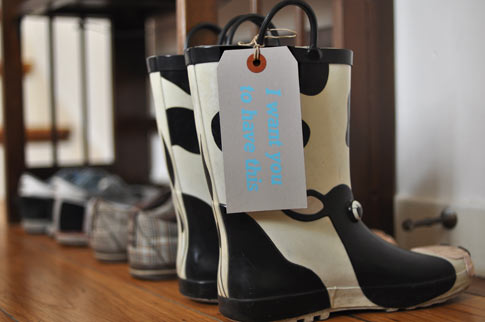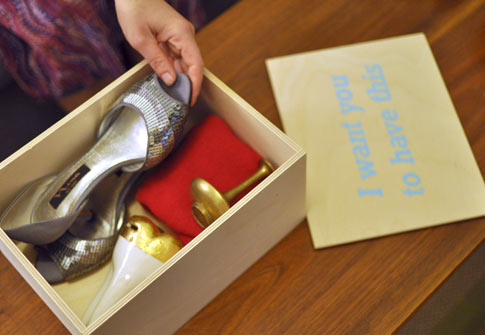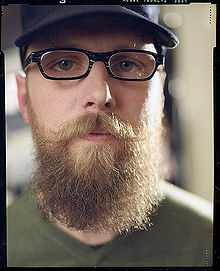Generosity is a lie. To be more precise, generosity, as a form of absolute selflessness is almost never achievable, and most often when you come across someone attempting to be actively generous it’s an action rife with conflict and contradiction. Though we hate to admit it, we shouldn’t worry about this too much. Unless you are training to be the Messiah why should it be any other way? People want to redeem themselves, they want to boost their ego, their sense of self-worth. People want to do good deeds for any number of reasons. And yet, to continue the adage, our punishment for our good deeds done is often the guilt in knowing that we wanted something in return for our actions, no matter how incalculable that return might be within our own heads and hearts. However benignly or benevolently, however grossly, we are selfish beings. Is that so wrong? How much good is psychically corrupted in hiding it?
Would it be more helpful for us to start describing these acts in a somewhat different fashion, a fashion more productive to the situation at hand, one that for semantics sake doesn’t degenerate into questions of intent? There’s no shame in admitting that we get something out of giving. It doesn’t dilute the gesture or its value. We create our own values when it comes to unregulated and intangible systems of exchange. Let’s therefore promote a community of reciprocity wherein our return, the exchange in question, is self-determined. Let’s do away with the problematics of generosity for something more anarchic, more complex, more… generous in deed than definition.
Steve Lambert – his person and his work – exists on a continuum in a long line of absurdist provocateurs hell bent on changing the world for the better one sincere, well-formed, slightly ridiculous gesture at a time. Sometimes it’s not intentionally so ridiculous, it’s just that from the outside, for those not already there, it can seem a little far-fetched. But just wait. You’ll see. He makes objects and actions in equal measure, never favoring one over the other – they are all constructed as a means of provoking dialogue around various political subjects, profound and humorous alike. For Lambert these bits of provocation are intended to get people thinking (and talking) about how they act, what they believe, how they imagine the world around them, and how they imagine what it could be. Inaccurately defined, his work is generous. It gives a lot of itself. It also asks for much in return from its viewers and participants. So, from here on out, I’ll use Lambert as an agent for my argument.
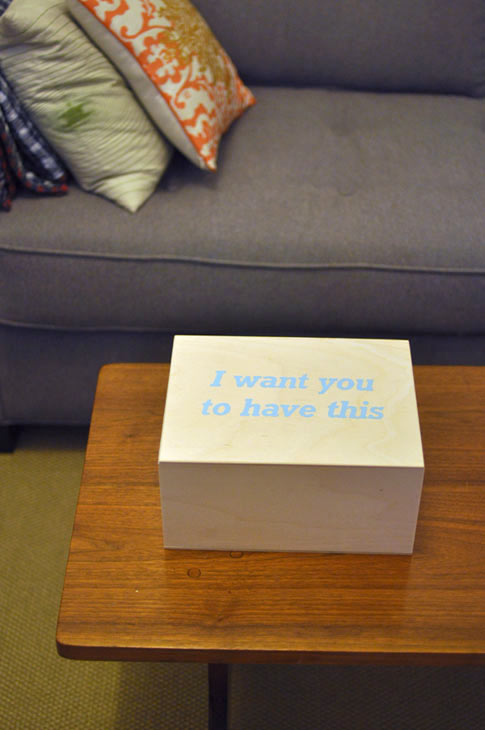
Lambert’s newest project is an edition, a simple wooden box with the words, “I Want You to Have This” inscribed upon it. Keep it by your front door. Put that scratched copy of Come On Feel the Lemonheads inside, your old rabbit’s foot, the weed someone gave you and you’ve kept in the freezer for years, in the hopes it will remain fresh, thinking, “I like pot. I’ll smoke this someday. The perfect day…” and yet you just never got around to it. I Want You to Have This allows you to give away the shit you don’t want anymore, the items that follow you, from one house to the next, one phase of your life to another, like a benign demon, a cuddly, lice-free, and not all that heavy monkey on your back. They aren’t too much of an intrusion or burden, these items. But honestly, they take up space and you don’t need them now, and you might not ever have to begin with. Why not give them away? The piece is a very simple gesture that aims at discussing a less than simple subject; the transparency of a gift delivered insincerely. A gift can be a burden, and a burden given in the guise of a gift can really piss people off, as cultural norms state that you have to accept the damn thing without complaint.
These days it seems to call someone out as a Social Practice artist is to say they are doing something, which for one is public, as well as new and difficult to define. Or to call some a Social Practice artist is to say that their work is, again, public and that they aren’t trying hard enough. Lambert is a Social Practice artist, but not quite for either of those reasons. His work is about publics, yes. And his work is not hard to define or difficult. It is deceptively simple. Simplicity, as a methodology, is a great asset in the creation of a public around a piece or practice. It allows those who engage a work to enter into the piece easily, with confidence that they are aware of its place in the world, how it works, and how they are to engage it. From there on out, they gain the agency to consider, deconstruct, and absorb the work as their own. They are aware of the ruse, the trick, the framework, and in the case of Lambert’s practice, their “in on the joke.” His work, in line with a particular stain of Social Practice, is public in that it is often situated outside of the gallery space, but far more importantly it is about galvanizing a group of unknown people around an idea to consider it and make it their own. It is open. It is malleable. It grows from project to project to include others. It continues conversations from one to the next, and encourages the viewer/participant to converge with the work of other practitioners, as well as become one themselves if they do not consider themselves one already. It asks us to do this work till it doesn’t become work any more but life. It asks us to form A Public around our work so that through embodiment and accumulation it may become The Public, i.e., Common Place, Quotidian. It represents itself in a state of becoming, in that it suggests to those who encounter it a possibility of a future, a future which they are part of – with others.
Social Practice accepts and values the influence of other fields and histories outside of the aesthetic realm. Furthermore, contrary to what one might expect, Social Practice values art and aesthetics equally as much as the practices so-called outside influences. And, with that in mind, it finds that the designation of art can allow one to mine fields and hybridize them in a manner to elicit dialogue around issues that are important to the practitioner, and as this work is about the formation of publics, those that gravitate towards the work. Of course this forces one to mention an important issue – there’s a lot of disingenuous crappy social practice work out there that doesn’t work hard enough, that isn’t critical of its own intentions, and yet due to its relative “newness” gets lumped with the rest. This is work that wants to give, wants to be (pseudo)generous, without being honest with its intentions or desires, without being open with its tensions, which are generative and nothing to hide. I say this without a want to be cynical, and I’d argue that my statement isn’t that. It’s to say that to create a space that values the socio-cultural and political intentions of its rhetoric the person or people who envisioned and desired that space need to get naked, fight to relieve themselves of hierarchies, and attempt the creation of an area of questioning as much as an area of statement making. Too much Social Practice continues to value statements over questions. I’d argue though that the questions, in the end, are the slightly more valuable by-product of the two. Good questions provoke more thoughtful statements. Questions, which are of honest concern to those who ask them, are reciprocal in nature.
And this brings us back to my original point. A practice concerned with the formation of publics, the notion of social art as a form of generosity has become increasingly prevalent. For a practice whose strengths, for one, lay within its non-hierarchical stance, this is disingenuous when inconsiderately employed. In response to the work of artists such as Harrell Fletcher, do-gooder work abounds, with more and more works and projects proposing to do this and that for someone. But the imitators and the influenced, as well as Fletcher’s work itself, seem dangerously hollow. I say dangerous because I see and believe deeply in the public possibilities and political efficacy of a certain strain of Social Practice. When a work or worker presupposes that they have something to give to someone without making it plainly apparent that they get something in return for this act, a system of hierarchies is established and allowed to flourish; between artist and participant, between white people and people of color, between middle class or rich and the poor, able and disabled, and so forth down the line. A practitioner working in this way promotes dictation over facilitation in that its more about making statements through their interactions than it is about asking questions of the people who allow that interaction to emerge, or about being publicly questioned ourselves. We need to express, in overt, theoretical, even aesthetics terms that we as social practitioners are part(s) of the public which we are actively attempting to form, not actors alongside or outside the public(s) which we endeavor to help create. And, if it is evident to others that, in certain circumstances we do not consider ourselves part of that public, we need to ask difficult questions of ourselves if we wish to see the work we do as separate from ourselves while continuing to be politically efface-able. Simply put, our concerns and actions need to be reciprocal in some form or another, and this reciprocity needs to be visible. We need to ask, “What do I get out of this,” with as much intention as, “what can I give.” This is a problem that Lambert handles often, and elegantly.
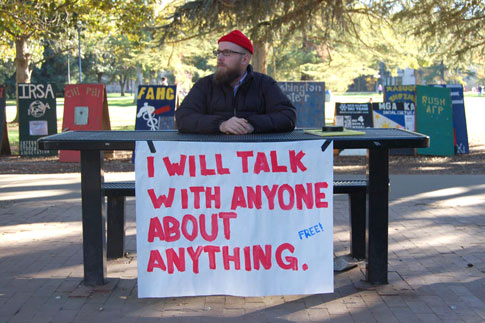
Steve Lambert, “I will talk with anyone…” January 2006 image courtesy of artist
Whether creating a space to publicly talk “about anything” (as in Lambert’s 2006 work, I Will Talk With Anyone…), or an object that asks its viewer to consider the manners and habits in which we give of ourselves to others (as in Lambert’s newest work), an exchange between maker and participant takes place in the work we make. In this sense, there really isn’t too much of a difference between I Want You to Have This and another work of Lambert’s, a collaboration with The Yes Men and many others, entitled NY Times Special Edition. Each work takes a simple object and presents a set of possibilities and problems in front of those who encounter it. Both are works that are supposed to live with you, rather than you visit them, in that they enter into the most quotidian aspects of our day; our commute, a visit to a friend’s house. While the scale of each project differs, the intentions of both are of a piece. They ask us to question the things in our life that we find most common place and immovable; the material wealth we collect yet find burdensome, our complicity in war’s fought in our name, education and the models we accept for ourselves and others, or our participation in economies of all sorts. With a slight smile they ask, “Well… what if?” They give something to you for free, and yet ask you to do something with the information or object you’ve received. They agitate for us to question our considerations. They are anything but singular, anything but passive, anything but generous as we know it.
.
.
Sam Gould is co-founder of Red76, a collaborative art practice which originated in Portland, Oregon in 2000. Along with his work as the instigator and core-facilitator of many of the groups initiatives, Gould is the acting editor of its publication, The Journal of Radical Shimming. He is a senior lecturer at the California College of the Arts in San Francisco, Ca. within the Graduate Fine Arts Dept. for Social Practice and is frequently a guest lecturer at schools around the United States and abroad.
Gould’s work has been activated through projects and lectures on street corners, in laundromats, bars, and kitchen tables, as well as through collaborations with museums and institutions such as SF MoMA; the Walker Arts Center; the Drawing Center; the Bureau for Open Culture; Institute for Art, Religion, and Social Justice at Union Theological Seminary; ArtSpeak; Printed Matter; the Cooper Union; the New Museum/Rhizome; Manifesta8; and many other institutions and spaces worldwide. He was one of nine nominees for the de Menil Collection’s 2006 Walter Hopps Award for Curatorial Achievement, is a founding “keyholder” of MessHall, and was the 2008 Bridge Resident at the Headlands Center for the Arts.
